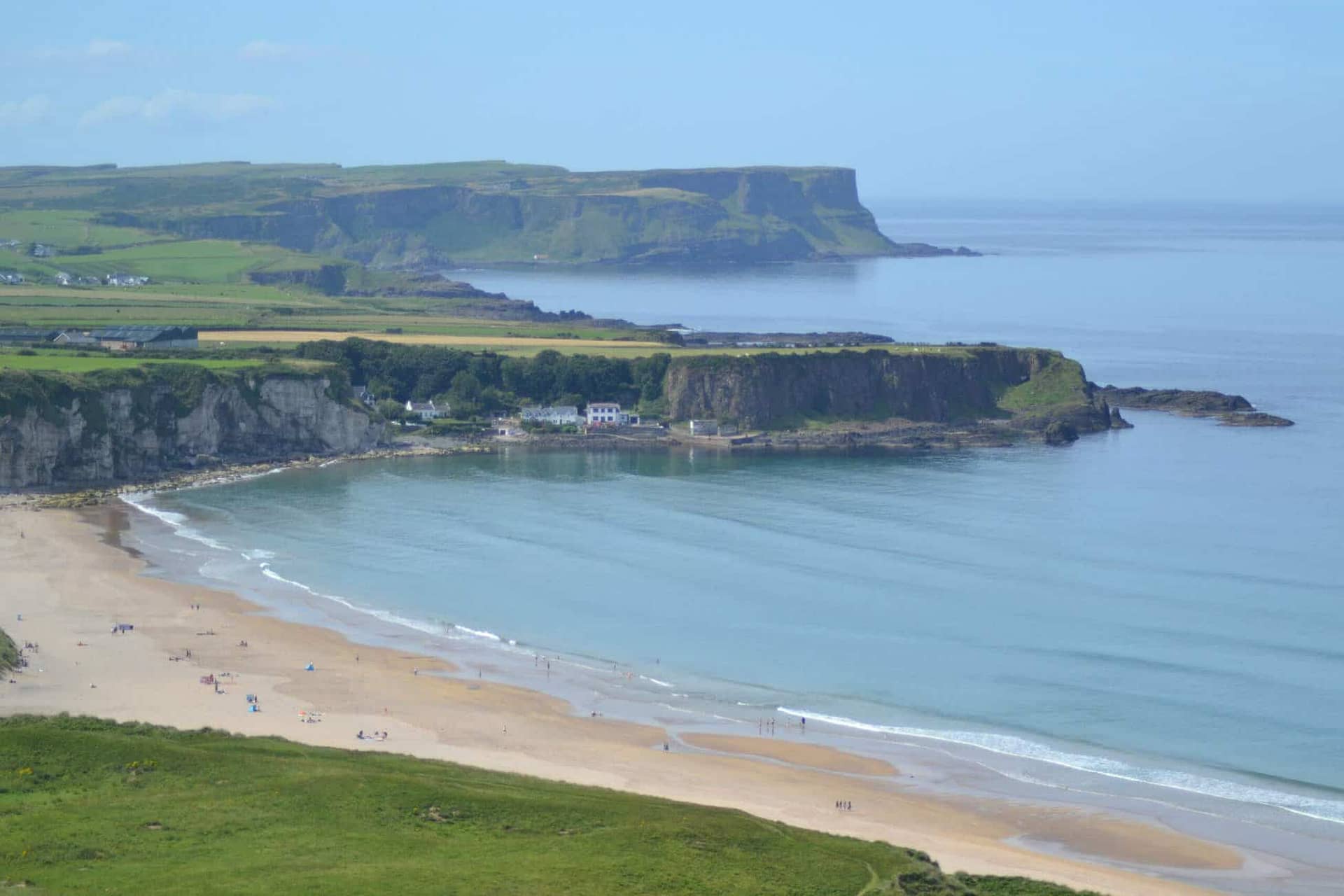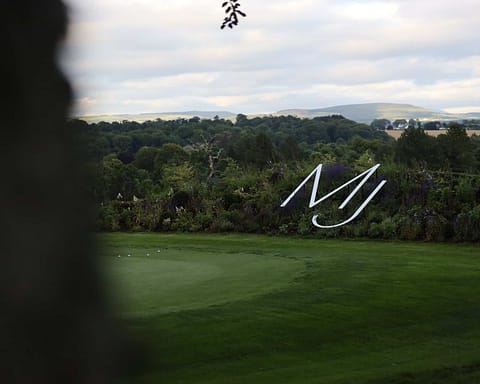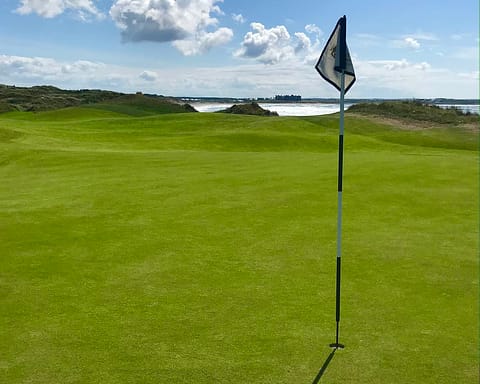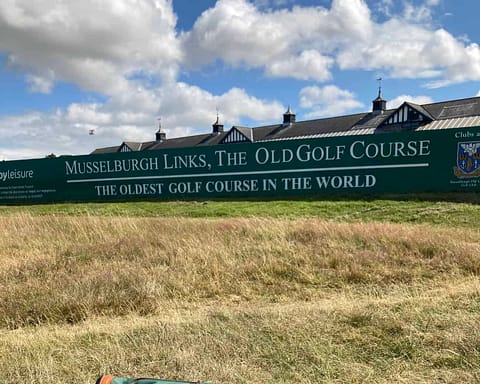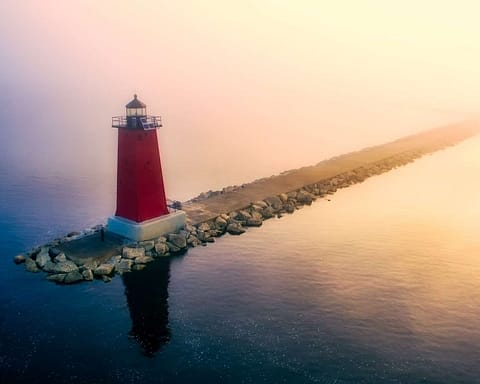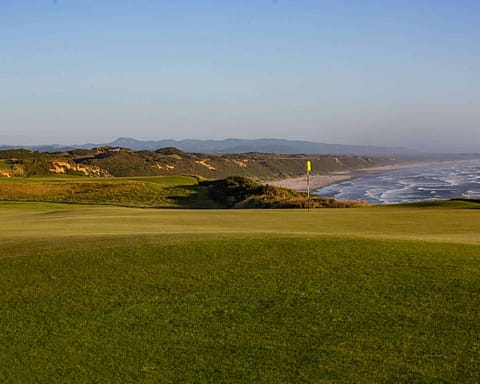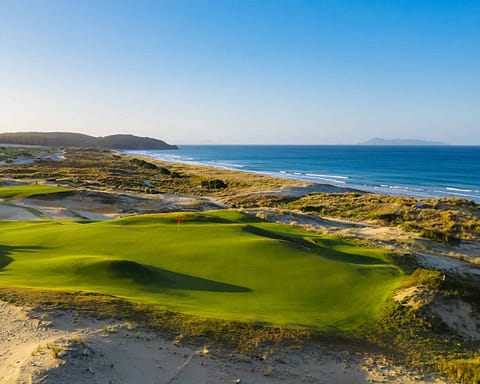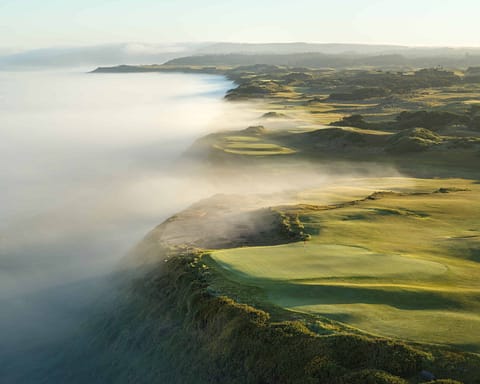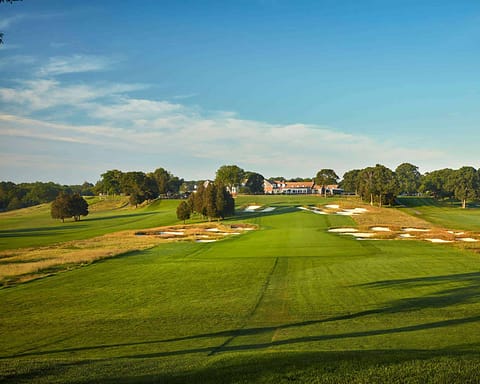I’ve been lucky to experience some of the world’s great sea-meets-land road trips: the PCH in California, North Coast 500 in Scotland, the Amalfi Coast in Italy – but as I meander along Northern Ireland’s spectacular Causeway Coastal Route, I’m increasingly convinced that this is up there with them.
None of it should come as a surprise. This incredible part of Northern Ireland was voted the number one place to visit in the world by travel publisher Lonely Planet a few years ago, and the change in perception that has taken place over the past two decades has helped to usher in a new era of tourism driven by Game of Thrones, golf, Titanic Museum and the extraordinary beauty which has remained unspoilt here for centuries.

And yet, the wonder of it all still comes as something of a surprise. You can read about something, look at beautiful photographs and watch videos, but nothing quite prepares you for the reality. That was certainly the case for me, and here it felt like the natural rugged beauty of the coastline was enhanced by the richness of the whole experience – the people, the history and the mystique of this land.
Full disclosure: the weather was incredible during our time in Northern Ireland, so much so that, at times, it felt like were flying along Highway 1 in California (but with better greenery and castles). And yet, while the sunshine always helps, it can only enhance what is already there.

The coastal road itself was spectacular, particularly in the north, where we skirted along the cliff edges, snaked through quaint villages and went on a journey that allowed us to drink in the historic grandeur of all that is on offer here. The Causeway Coastal route lays bare all that is special about Northern Ireland. It’s understated, underrated natural charm and beauty, which is above shouting about itself, instead simply reeling you in during a meander down the road, with plenty of conversation and warmth that tells you exactly how special NI is, without ever needing to actually tell you once.
We began our adventure in Belfast, striking out along the Shore Road on the low-lying land which flanks the mouth of the Irish Sea at Belfast Port. The Giant’s Causeway was the one stop we knew we would make, but aside from that the road ahead was an open invitation for discovery and adventure. Our first day took us along the eastern stretch of the route as we headed north for Portstewart. Ahead lay villages, ancient castles, beautiful beaches and meetings and moments that we’ll always cherish. The challenge was not to pull the car over and stop at every turn to take a photograph or explore a new place – as each new corner revealed a view even more dramatic than the last. Here are some of the highlights and suggested stops for a trip along the coast.
After a few hundred memorable miles on coastal road, we reached the Me & Mrs Jones hotel in Portstewart, a charming harbour enclave. Ben was playing golf at Portstewart Golf Club just down the coastal road, with the dunes visible from the harbour beyond the vast stretch of sand that was Strand beach. The next morning he drove along the road to Castlerock for another memorable game of golf, and with Royal Portrush 10 minutes or so away in the other direction, this is a stunning place for a fly-drive golf trip.

The northern coastal towns of Portstewart and Portrush are intimate and cosy, but still a hive of activity. Just along the road from Portrush you’ll find Dunluce Castle, which is a stunning spot for a photograph and it’s a popular one too. The beaches between the Giant’s Causeway and Ballycastle are as idyllic as any I can recall seeing, some so remote they remain largely untouched. We pulled over in a quiet viewing spot for lunch, which overlooked a beach with pure white sand, a calm, twinkling ocean in front of us – and almost no one around.
Northern Ireland is like that, though. While it’s known the world over for its beauty and heritage, it offers many surprises. The Causeway Coast is traversable in a day or two, but you need a lifetime to explore everything it has to offer, which is why we’ll be back. Get over there and see for yourself, and allow that unmistakable spirit to awaken yours along the Causeway Coast.
CAUSEWAY COASTAL ROUTE: 10 best stops
–Carrickfergus Castle
Whether you are approaching by land, air or sea, Carrickfergus Castle is wonderfully impossible to miss. This 800-year-old monument looms large on the landscape and dates to 1177.
–The Gobbins
Not for the fainthearted, this dramatic cliff-face walking experiences comprises of stunning bridges, incredible tunnels, and unique staircases. Dating back to 1902 but reopened in 2015, the word ‘Gobbins’ comes from the Irish ‘Gobain’, meaning points of rock.

–Glenarm
Sitting in the first of nine glens on the Antrim Coast Road, Glenarm is one of the oldest villages in the region, with 50 listed buildings helping to class it as an area of outstanding natural beauty. Glenarm Castle, a private home, sits at its centre although it is not open to the public, but the incredible walled gardens can be visited.
-The Torr Head Road:
This scenic, promontory is a detour off the main Causeway Coastal Route but is one you mustn’t miss. From here you will see stunning views across to the Mull of Kintyre, as you are at the closest point between Scotland and the island of Ireland itself.
–Ballycastle
The start of arguably the most spectacular stretch of the coastal road, Ballycastle is a place from which you can catch the ferry to Rathlin Island, which happens to be Northern Ireland’s only inhabited island. It is also home to a quarter of a million seabirds. Legend has it that Robert the Bruce once sought refuge in a cave on Rathlin, having been driven away from Scotland.
-Carrick-a-Rede Rope Bridge
Another for those with a strong constitution, this wonderfully dramatic and rickety rope bridge spans a 30m deep gorge. It was once used by fisherman to check their salmon nets but now those who walk across it are rewarded with some truly breathtaking views.

–Ballintoy Village and Harbour
Ballintoy (from the Irish meaning ‘the northern townland’) will be well known to fans of Game of Thrones, having been featured in the TV series. It’s charming place with so much to see and do.
–The Giant’s Causeway
It needs no introduction, but this UNESCO World Heritage Site dates back some 60 million years when 40,000 or so hexagonal-shaped stepping-stones were formed thanks to the cooling of molten lava. The more interesting story is the legend of Irish giant, Fionn mac Cumhaill, who created a pathway of stepping stones to cross the sea and fight the Scottish giant, Benandonner. On sight of his Scottish foe, Fionn realised he would lose his fight and so chose to disguise himself as a baby. Benandonner, seeing the baby, could only imagine the size of this child’s father and so decided to destroy the causeway.
–Bushmills Distillery
The oldest working distillery in Country Antrim, Bushmills dates to 1608 when James the 1st granted permission to distil. Lots of tailored events, tours and, of course, tastings.
–Glenariff Forest Park
Arguably the most stunning of all Antrim’s nine glens, Glenariff is a place of serene walks and waterfalls. Good for the soul.
*For more info visit discovernorthernireland.com/

